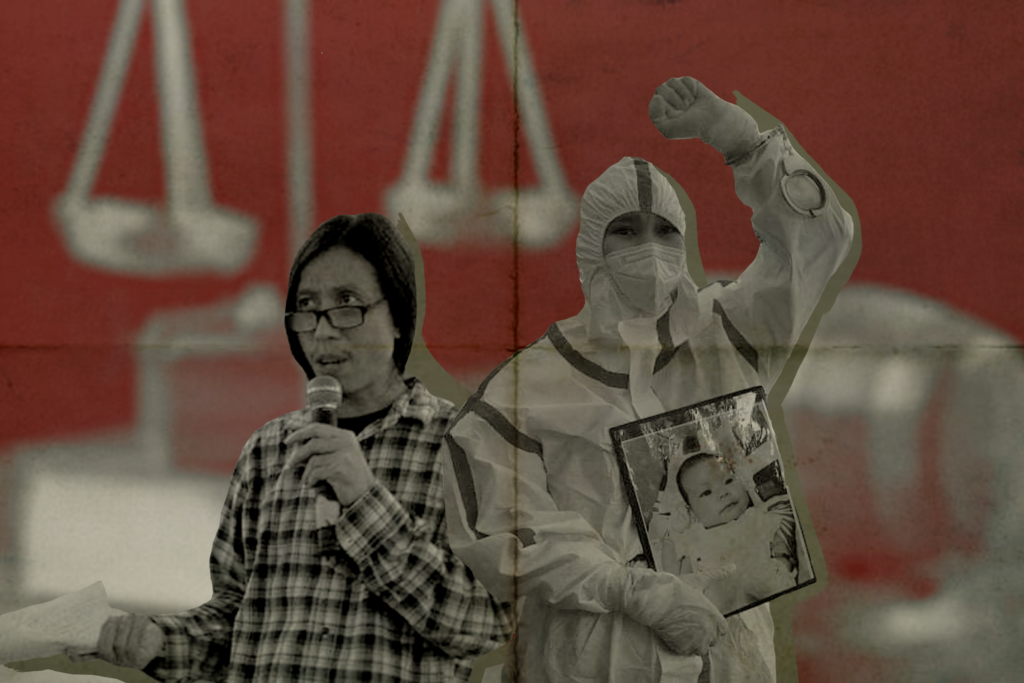Nasino and Acosta: Two stories, same human rights issues

IN HIS second State of the Nation Address on July 24, President Ferdinand Marcos Jr. failed to mention human rights. The media dutifully noted this omission. In the same week, two updates about activists provided a glimpse of the state of human rights in the Philippines. Unfortunately, some media gave these only scant attention.
What’s the Story?
On July 27, media reported a Manila court’s acquittal of activist Reina Mae Nasino and two others from charges of illegal possession of firearms and explosives due to insufficiency of evidence. Nasino was pregnant when she was arrested and gave birth to a baby she named River while in detention. The court ordered the separation of Nasino from her child, who subsequently died.
Baby River’s burial made national and international headlines in 2020, the height of the COVID-19 pandemic. The police dispatched dozens of uniformed escorts to guard Nasino; the escorts did not allow the mother to hold her baby one last time. CMFR previously noted that media described in detail the “cruel and inhumane” treatment against Nasino and spotlighted the human rights violations committed against the mother and her child.
Two days after Nasino’s acquittal, on July 29, forensic pathologist Raquel Fortun raised questions on the death of Ericson Acosta, the slain poet-activist and National Democratic Front consultant. The government had earlier said that Acosta died during a firefight with troops but Fortun explained that, based on her examination of Acosta’s remains, Acosta was shot even when he was already dead.
Compared to Baby River’s death and burial, the acquittal of Nasino gained scant TV coverage. Only ANC’s Dateline Philippines aired a report on TV, although the Philippine Daily Inquirer, Manila Standard, Manila Bulletin, Daily Tribune, online news outlets Rappler, Philstar.com, Inquirer.net, and online counterparts of TV channels ABS-CBN News, CNN Philippines, GMA Integrated News, News5 reported on it.
Meanwhile, only Philstar.com, Bulatlat, GMA Integrated News, and ABS-CBN News Online reported on the autopsy report on Acosta.
What the Reports Got Right
Nasino’s acquittal came almost four years after her arrest, and almost three years since Baby River was laid to rest in October 2020. Some news outlets reviewed the timeline of the case and cited sources who added to the discussion.
Rappler and ABS-CBN News provided the complete timeline of Nasino’s case. In the course of the Duterte’s administration’s crackdown against activists, Nasino, with Alma Moran and Ram Carlo Bautista, were arrested in November 2019 at the office of progressive group Bagong Alyansang Makabayan. In September 2022, the Court of Appeals voided the warrant used against the activists, citing failure to meet standards. In December 2022, the Manila court granted their petition for bail.
Another Rappler article and a News5 story cited rights group Kapatid, which urged the Supreme Court to review the “warrant factory” against activists. The group noted that at least 76 activists were arrested for illegal possession of firearms and explosives issued by Judge Cecilyn Villavert, executive judge of the Quezon City Regional Trial Court. Rappler also mentioned similar cases dismissed, such as that of journalist Lady Ann Salem and trade unionist Rodrigo Esparago.
Manila Bulletin cited Gabriela party-list Representative Arlene Brosas who said the acquittal is a “testament” to the flawed and baseless charges against them. Inquirer cited the International Coalition for Human Rights in the Philippines, which said that the police violated Article 3 of the Convention on the Rights of the Child.
Meanwhile, Fortun showed during a press conference that Acosta, who was supposedly killed in an encounter with soldiers in December 2022, was shot multiple times even when he was dead. Philstar.com correctly cited Article 3 of the 1949 Geneva Conventions and the Philippine Army Soldier’s Handbook which prohibits the inhumane treatment of armed parties who are no longer able to participate in combat, including the wounded and the dead.
Why Is This Important?
Both cases show the slow pace of justice in the Philippines and the lack or absence of respect for human rights, particularly for those perceived by the state as “enemies.” While the government may not deem these as important, the media should fully appreciate the profound significance of how government deals with critics and those opposed to the administration. Abuses under Duterte should not simply be treated as a thing of the past. Just as Marcos administration should not be given a free pass on human rights.
Leave a Reply